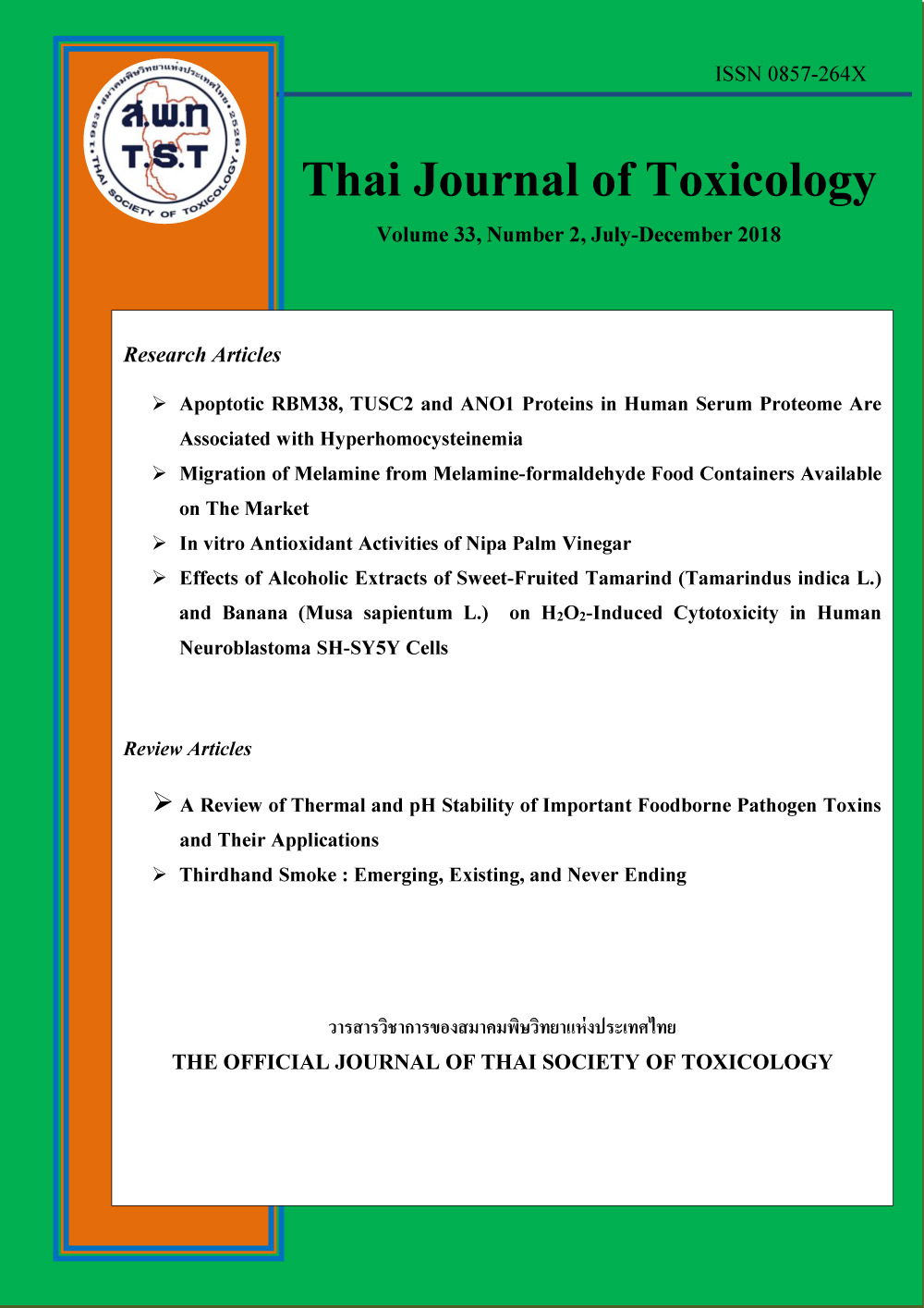บุหรี่มือสาม : เกิดขึ้น ตั้งอยู่ ไม่ดับไป
Main Article Content
บทคัดย่อ
บุหรี่มือสามคือสารจากควันที่เกิดจากการเผาไหม้ของบุหรี่ซึ่งปนเปื้อนอยู่บนพื้นผิวต่าง ๆ ในสิ่งแวดล้อมและบนร่างกายภายหลังการสูบ การรับสัมผัสเกิดได้ทั้งจากการกิน การดูดซึมทางผิวหนัง และการหายใจ การศึกษาผลกระทบต่อสุขภาพของบุหรี่มือสามในปัจจุบันนั้นยังมีข้อมูลอยู่จำกัด มีรายงานว่านิโคตินจากควันบุหรี่เมื่อทำปฏิกิริยากับมลพิษชนิดอื่นในอากาศ ได้แก่ โอโซน และกรดไนตรัส เกิดเป็นสารกลุ่มที่เรียกว่า Tobacco-specific nitrosamines (TSNAs) ซึ่งบางชนิด ได้แก่ N’-nitrosonornicotine (NNN) และ 4-(methyl-nitroso amino)-1-(3-pyridyl)-1-butanone (NNK) เป็นสารก่อมะเร็งในมนุษย์ การตรวจวัดบุหรี่มือสามในสิ่งแวดล้อม สามารถทำได้โดยการเก็บตัวอย่างฝุ่นเพื่อวิเคราะห์หานิโคตินและสารกลุ่ม TSNAs ส่วนการประเมินการรับสัมผัสนั้น พบว่าการวิเคราะห์อัตราส่วนของโคตินีน และ NNK ในปัสสาวะเป็นทางเลือกที่น่าสนใจที่จะแยกแยะการรับสัมผัสนิโคตินจากบุหรี่มือสองและบุหรี่มือสาม ปัจจุบันแม้ว่าจะมีมาตรการทางกฎหมายเพื่อคุ้มครองผู้ไม่สูบบุหรี่แต่ก็ยังไม่ครอบคลุมถึงบุหรี่มือสาม การให้ความรู้และสร้างความตระหนักของผู้สูบบุหรี่เกี่ยวกับผลกระทบทางสุขภาพต่อตนเองและคนในครอบครัวจะได้รับจากบุหรี่มือสาม อาจนำไปสู่การลด ละ เลิกการสูบบุหรี่ อันจะนำไปสู่การลดอัตราการป่วยและเสียชีวิตที่เป็นผลจากการสูบบุหรี่ได้


